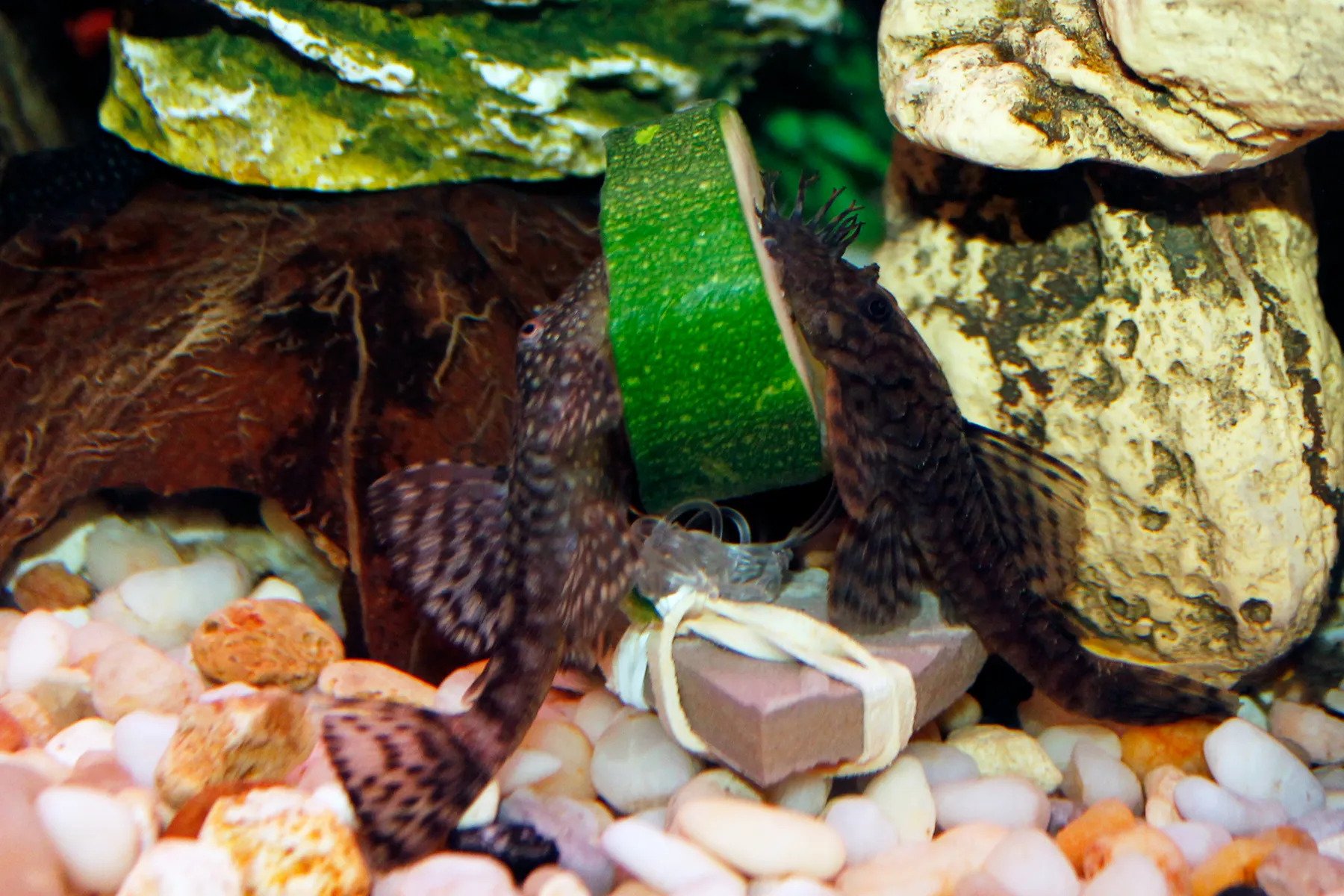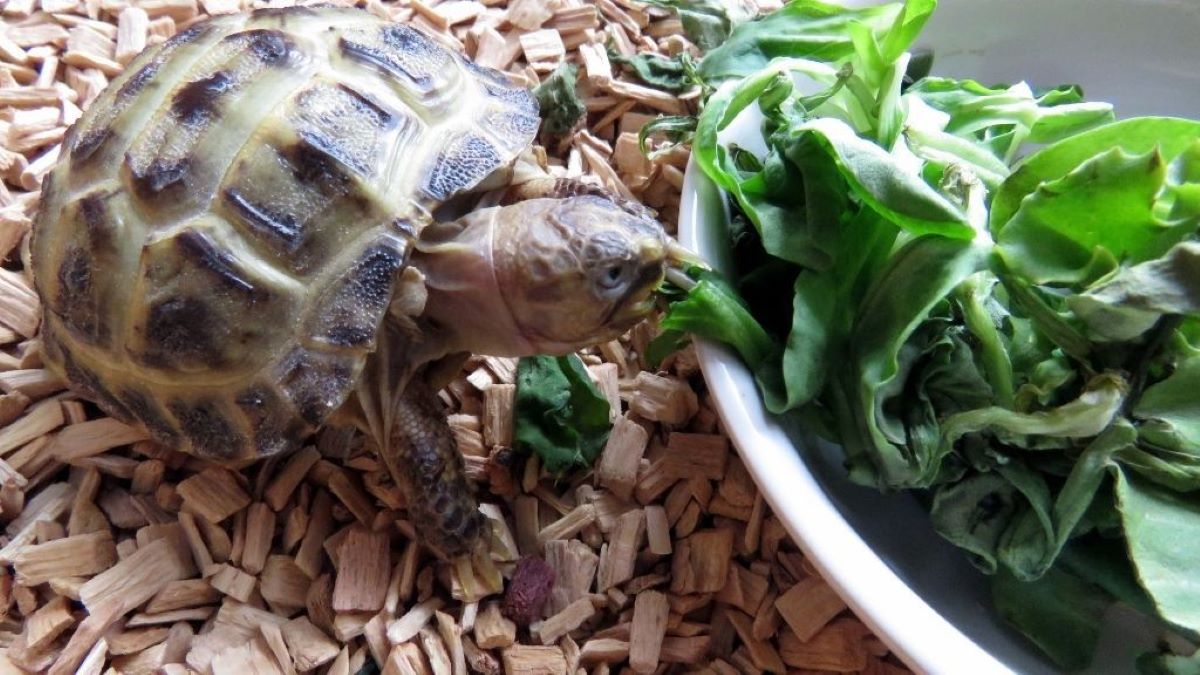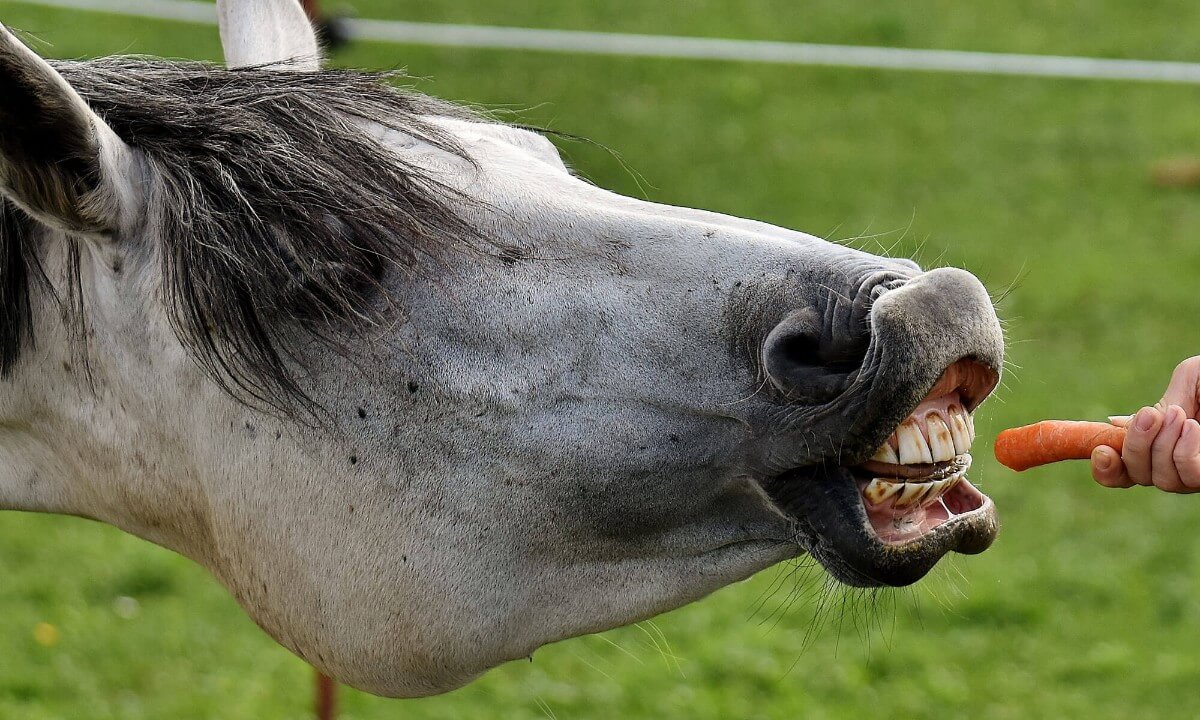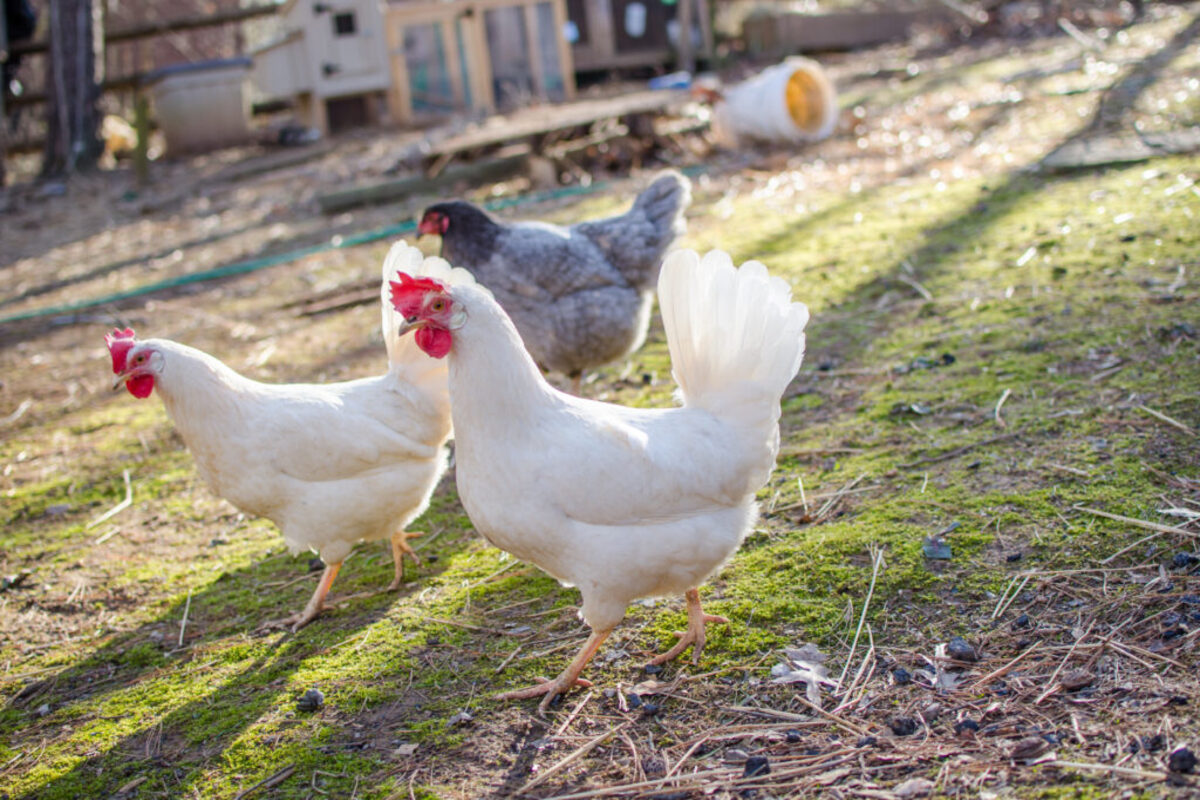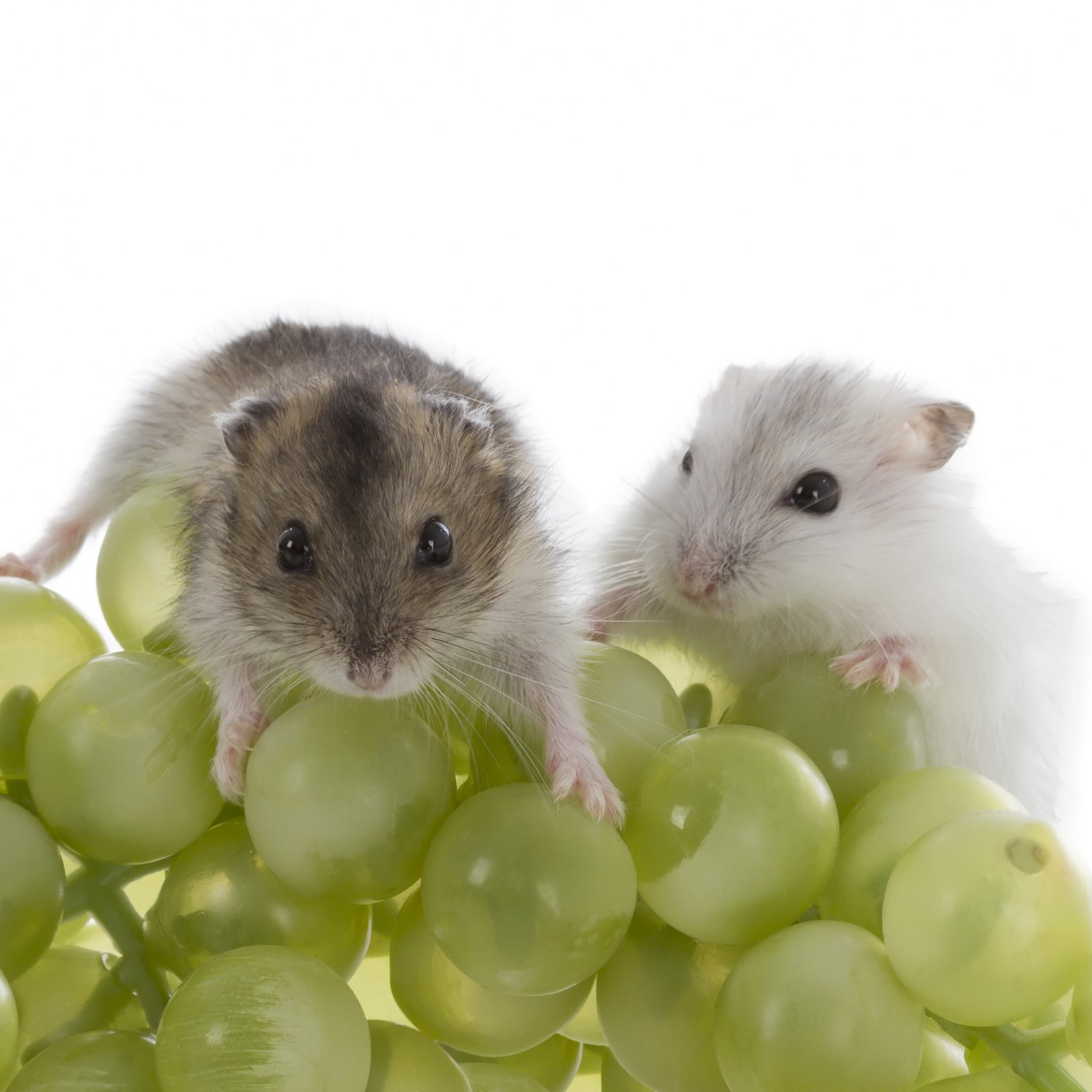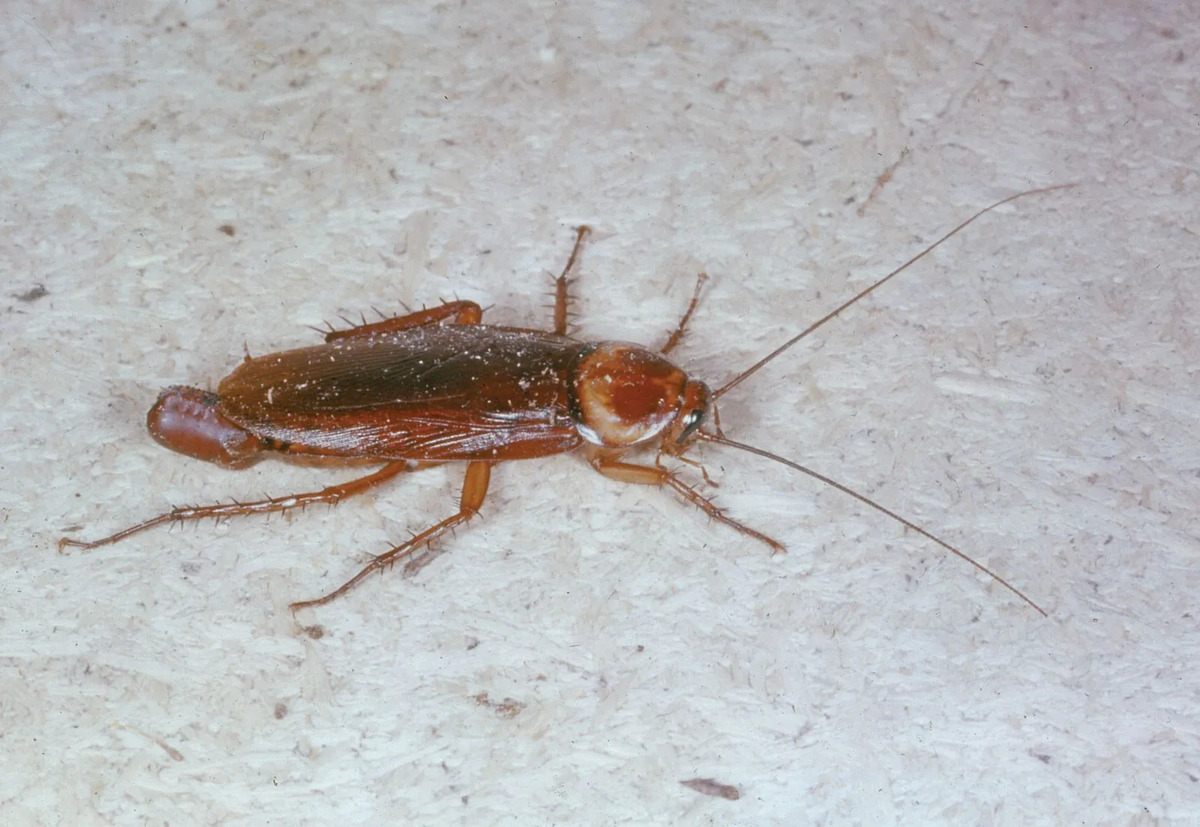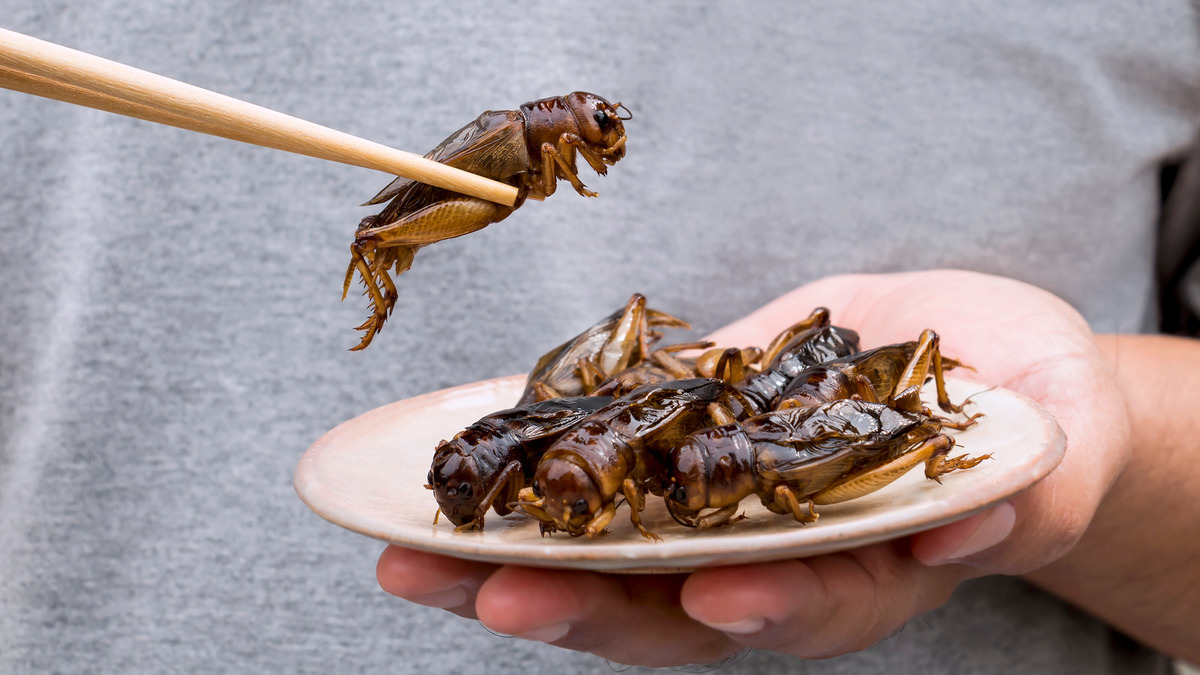Home>Gardening News and Trends>Latest News>What Can Frogs Eat Besides Insects


Latest News
What Can Frogs Eat Besides Insects
Published: December 6, 2023
Discover the latest news on what frogs can eat besides insects. Explore alternative diets and nutrition options for your pet frogs.
(Many of the links in this article redirect to a specific reviewed product. Your purchase of these products through affiliate links helps to generate commission for Chicagolandgardening.com, at no extra cost. Learn more)
Table of Contents
Introduction
Frogs are fascinating creatures that inhabit various ecosystems around the world. Known for their jumping abilities and unique croaking sounds, these amphibians are often associated with their diet of insects. While insects make up a significant part of their diet, frogs are not limited to consuming just this group of animals. In fact, frogs have a diverse appetite and can eat a wide range of food items depending on their species, habitat, and availability.
In this article, we will explore the different types of food that frogs can eat besides insects. From vegetation to small fish, worms to fruits, frogs have a surprising variety of dietary options. Understanding what frogs can eat besides insects not only provides insight into their ecological role but also sheds light on the diverse strategies these amphibians employ to survive and thrive in their environments.
It is important to note that the specific diet of a frog can vary depending on its species and habitat. While some frogs are generalist feeders and can consume a wide range of food items, others may have more specialized dietary preferences. Additionally, the availability of certain food sources may change depending on the season or geographical location.
Now, let’s dive into the vast array of food options that frogs have beyond insects.
Vegetation
Contrary to popular belief, frogs are not solely carnivorous and can actually consume various types of vegetation as part of their diet. This is particularly true for certain species of frogs that reside in or near water bodies, such as ponds and wetlands.
One common example of vegetation that frogs can eat is algae. Algae are aquatic plants that often form on the surface of stagnant water. Some species of frogs, such as the green tree frog, have specialized mouthparts that allow them to scrape and consume algae. Algae provide a source of nutrients, including carbohydrates and proteins, for these frogs.
In addition to algae, frogs may also consume aquatic plants like water lilies and duckweed. These plants provide not only nutrients but also serve as a source of hydration for the frogs, especially during dry seasons where water sources may be scarce.
Certain terrestrial frog species may also incorporate vegetation into their diet. For instance, the red-eyed tree frog, in addition to insects, may occasionally consume small leaves, flowers, and fruits. The plant matter offers supplementary nutrients and can be an important food source when insects are less abundant.
While frogs primarily rely on their ability to capture and consume live prey, the inclusion of vegetation in their diet provides them with essential nutrients and increases their chances of survival in diverse environments.
Fruits and Berries
Although frogs are primarily known for their insectivorous nature, some species have been observed consuming fruits and berries as part of their diet. While this may not be a common dietary choice for all frog species, it does highlight their adaptability and ability to take advantage of available food sources.
Fruits and berries offer a variety of nutritional benefits to frogs. They are rich in vitamins, minerals, and antioxidants, which can contribute to their overall health and well-being. Additionally, fruits and berries can provide a significant source of hydration, especially in arid or dry environments where water sources may be limited. Some examples of fruits and berries that frogs may consume include berries, such as strawberries, raspberries, and blueberries, as well as softer fruits like bananas and papayas.
It is important to note that the consumption of fruits and berries by frogs is typically opportunistic and occurs when these food items are readily available. This may happen during certain seasons when fruits are abundant or when frogs find themselves in close proximity to fruit-bearing trees or plants.
Interestingly, some studies suggest that frogs may consume fruits and berries not only for their nutritional value but also as a means of acquiring dietary diversity. By incorporating a variety of food items into their diet, frogs can meet their nutritional requirements more effectively and adapt to changing environmental conditions.
While the consumption of fruits and berries may not be a primary dietary choice for most frogs, it serves as a fascinating example of their adaptability and resourcefulness in obtaining nutrients from various sources.
Small Fish and Tadpoles
When you think of frogs, the image of them feasting on insects may come to mind. However, some frog species have a taste for aquatic life and will include small fish and tadpoles in their diet.
Frogs that live in or near bodies of water, such as lakes, ponds, or streams, have the opportunity to hunt and consume small fish. These aquatic frogs have specialized adaptations that allow them to capture and consume fish effectively. Their powerful jaws and sharp teeth enable them to grasp and devour their slippery prey. Some species, like the African dwarf frog, are known to feed on small fish as part of their regular diet.
In addition to small fish, certain amphibians, including tadpoles, are also on the menu for some frog species. Tadpoles are the larval stage of frogs and are highly abundant in aquatic environments. Some adult frogs, such as the bullfrog, will actively seek out tadpoles as a food source. They use their long tongues to snatch the tadpoles from the water, providing them with a rich source of protein.
This cannibalistic behavior may seem surprising, but it is not uncommon in the animal kingdom. Frogs that consume tadpoles benefit from the high nutrient content they provide, particularly during stages of rapid growth and development.
It is worth noting that not all frog species consume small fish and tadpoles as part of their diet. The availability of prey and the specific ecological niche of the frog will influence their dietary preferences.
The inclusion of small fish and tadpoles in the diet of certain frog species demonstrates their adaptability to different food sources and highlights the complexity of their ecological roles in aquatic ecosystems.
Small Rodents and Amphibians
While frogs are often associated with consuming insects and other small invertebrates, certain species have a more carnivorous appetite and will prey on small rodents and other amphibians.
Some larger frog species have been observed hunting and capturing small rodents, such as mice or shrews, that come near their habitat. These frogs have robust bodies and powerful jaws that allow them to overpower their prey. They can use their long sticky tongues to quickly snatch and immobilize the rodents before swallowing them whole.
Additionally, certain frog species are opportunistic feeders and will not hesitate to consume other amphibians, including smaller frogs. This behavior, known as intrafamilial predation, occurs when frogs vie for limited resources within their habitat. In these instances, the larger frog species will prey upon smaller amphibians, demonstrating their ability to adapt their diet to the available prey options.
It is important to note that while some frog species may occasionally prey on small rodents and amphibians, this is not the typical dietary choice for most frogs. Their diet primarily consists of insects and other small invertebrates. However, the ability to incorporate larger prey into their diet further illustrates the range of feeding strategies that frogs can employ.
Furthermore, the consumption of small rodents and other amphibians by frogs plays a role in maintaining the delicate balance of predator-prey relationships within ecosystems. By regulating the populations of these animals, frogs contribute to the overall health and stability of their ecological communities.
Worms and Slugs
While frogs are often known for their prowess in catching insects, they are not limited to just this type of prey. In fact, many frog species will readily consume worms and slugs as part of their diet.
Worms, such as earthworms, play a vital role in the decomposition of organic matter and soil enrichment. For frogs, they serve as a nutritious food source, rich in protein and other essential nutrients. Some frog species, like the American green tree frog, are known to actively seek out and consume worms both on land and in water environments.
In addition to worms, frogs are also known to have a taste for slugs. Slugs are slow-moving mollusks that are often found in damp environments, such as gardens or forest floors. Frogs take advantage of their abundant presence and can consume them as part of their diet. Slugs provide a good source of moisture and protein for frogs, making them a valuable food resource in certain habitats.
It is worth mentioning that while worms and slugs may not be the primary food choice for all frog species, they serve as an important supplementary food source. Depending on their habitat and environmental conditions, frogs may encounter varying amounts of worms and slugs, which they can opportunistically prey upon.
The consumption of worms and slugs by frogs helps to control populations of these organisms within their ecosystems. By regulating their numbers, frogs play a role in maintaining a healthy balance of species and preserving the ecological integrity of their habitats.
Arachnids and Crustaceans
When it comes to expanding their diet beyond insects, frogs are not shy about including arachnids and crustaceans in their meals. These diverse groups of invertebrates offer a rich source of protein and nutrients for frogs.
Arachnids, which include spiders and scorpions, are fascinating creatures with their own unique predatory strategies. However, some frog species have developed a taste for them. Certain frogs are able to capture and consume spiders by using their quick reflexes and adept jumping abilities. The web-building nature of spiders can make them an attractive and easily accessible food source for frogs.
In addition to arachnids, frogs may also prey upon small crustaceans, such as freshwater shrimp or crayfish. These aquatic creatures are commonly found in ponds, streams, and lakes, providing an additional food source for frogs living in these habitats. Frogs have adapted to consume crustaceans by using their specialized mouthparts and powerful jaws to crush and consume these tasty morsels of protein.
While not all frog species consume arachnids and crustaceans as part of their diet, their ability to include them demonstrates their versatility in adapting to different food sources. These unique prey items offer a wider range of nutrients and contribute to the overall health and survival of frogs in their respective environments.
Frogs’ consumption of arachnids and crustaceans also plays a role in regulating their populations. By feeding on these invertebrates, frogs help maintain the ecological balance and ensure the health of their habitats.
Crickets and Other Small Invertebrates
When it comes to their diet, frogs are well-known for their voracious appetite for small invertebrates. One particular group of invertebrates that frogs commonly consume is crickets, which are highly abundant and provide a good source of protein.
Crickets are agile, jumping insects that are commonly found in grassy areas and near water sources. Their lively movements and nutritious value make them an attractive food item for many frog species. Frogs use their remarkable agility and precision to capture crickets in mid-air or pounce on them when they are resting on the ground.
In addition to crickets, frogs have a diverse range of small invertebrates on their menu. This includes insects such as grasshoppers, beetles, flies, moths, and mosquitoes. These invertebrates serve as a primary source of nutrients and protein for frogs, contributing to their growth and survival.
Frogs have developed various hunting strategies to capture these small invertebrates. Some species have long, sticky tongues that they quickly shoot out to snatch their prey, while others use their well-developed vision to locate and capture their targets. Some frogs even have specialized adaptations, such as sticky pads on their toes, which help them cling onto surfaces and ambush unsuspecting insects.
It is important to note that while frogs have a diverse diet of small invertebrates, they do not consume every type of insect they come across. Some insects have evolved defenses, such as toxins or bad taste, that deter frogs from feeding on them. This showcases the fascinating evolutionary interactions between frogs and the insects they prey upon.
The consumption of crickets and other small invertebrates by frogs is not only essential for their own survival but also contributes to the balance of insect populations within ecosystems. By keeping the populations of these invertebrates in check, frogs play a vital role in maintaining the ecological health of their habitats.
Conclusion
Throughout this exploration of the diverse diet of frogs, we have discovered that these amphibians have a remarkable ability to adapt to different food sources based on their species, habitat, and availability. While insects may be the most commonly associated food item for frogs, they are not limited to a solely insectivorous diet. Frogs can also consume vegetation, fruits, small fish, tadpoles, small rodents, amphibians, worms, slugs, arachnids, crustaceans, crickets, and other small invertebrates.
Frogs exhibit remarkable adaptability when it comes to their diet, allowing them to take advantage of available food sources in their environment. This adaptability ensures their continued survival and ability to thrive in various ecosystems across the globe. From the specialized diet of algae-scrapping frogs to the opportunistic feeding behaviors of frogs that consume larger prey like fish or small mammals, frogs display a wide range of feeding strategies.
Understanding the diverse diet of frogs is not only fascinating but also sheds light on their ecological role. By consuming a variety of food items, frogs are not only able to meet their nutritional needs but also contribute to the balance and stability of their respective ecosystems. Frogs play a significant role in controlling populations of insects, aquatic organisms, and other small animals, helping to maintain the delicate equilibrium of the food web.
As we continue to explore and learn about the fascinating world of frogs, it becomes apparent that these amphibians are not just insect-eating machines. Their ability to consume a wide variety of food sources showcases their adaptability, resourcefulness, and importance within their ecosystems.
Next time you hear the croaking of a frog or spot one hopping near a pond, take a moment to appreciate the diverse dietary choices that these fascinating creatures make. Frogs truly exemplify the dynamic nature of the natural world and remind us of the intricate connections between species and their environment.

